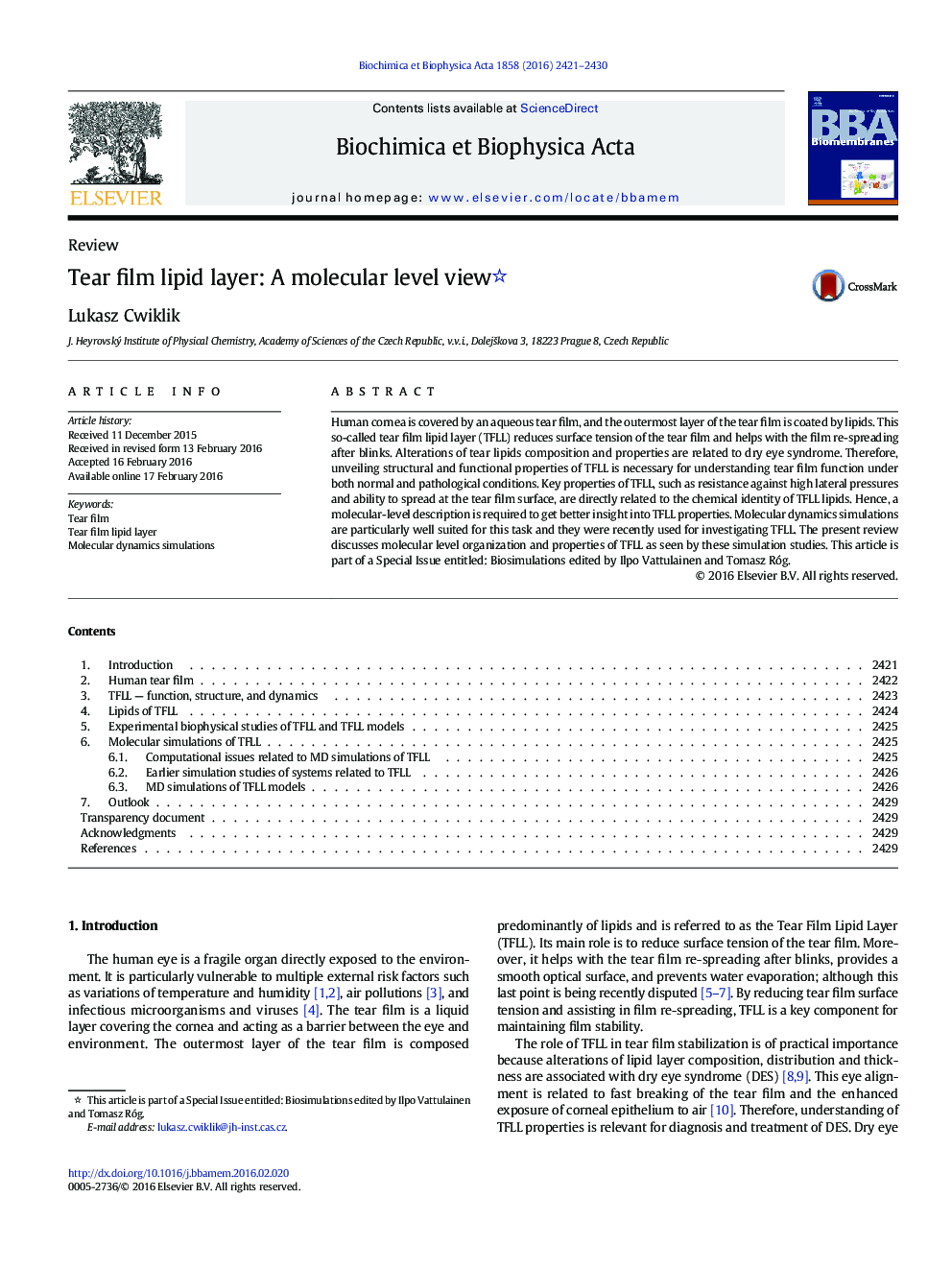| Article ID | Journal | Published Year | Pages | File Type |
|---|---|---|---|---|
| 10796388 | Biochimica et Biophysica Acta (BBA) - Biomembranes | 2016 | 10 Pages |
Abstract
Human cornea is covered by an aqueous tear film, and the outermost layer of the tear film is coated by lipids. This so-called tear film lipid layer (TFLL) reduces surface tension of the tear film and helps with the film re-spreading after blinks. Alterations of tear lipids composition and properties are related to dry eye syndrome. Therefore, unveiling structural and functional properties of TFLL is necessary for understanding tear film function under both normal and pathological conditions. Key properties of TFLL, such as resistance against high lateral pressures and ability to spread at the tear film surface, are directly related to the chemical identity of TFLL lipids. Hence, a molecular-level description is required to get better insight into TFLL properties. Molecular dynamics simulations are particularly well suited for this task and they were recently used for investigating TFLL. The present review discusses molecular level organization and properties of TFLL as seen by these simulation studies. This article is part of a Special Issue entitled: Biosimulations edited by Ilpo Vattulainen and Tomasz Róg.
Related Topics
Life Sciences
Biochemistry, Genetics and Molecular Biology
Biochemistry
Authors
Lukasz Cwiklik,
